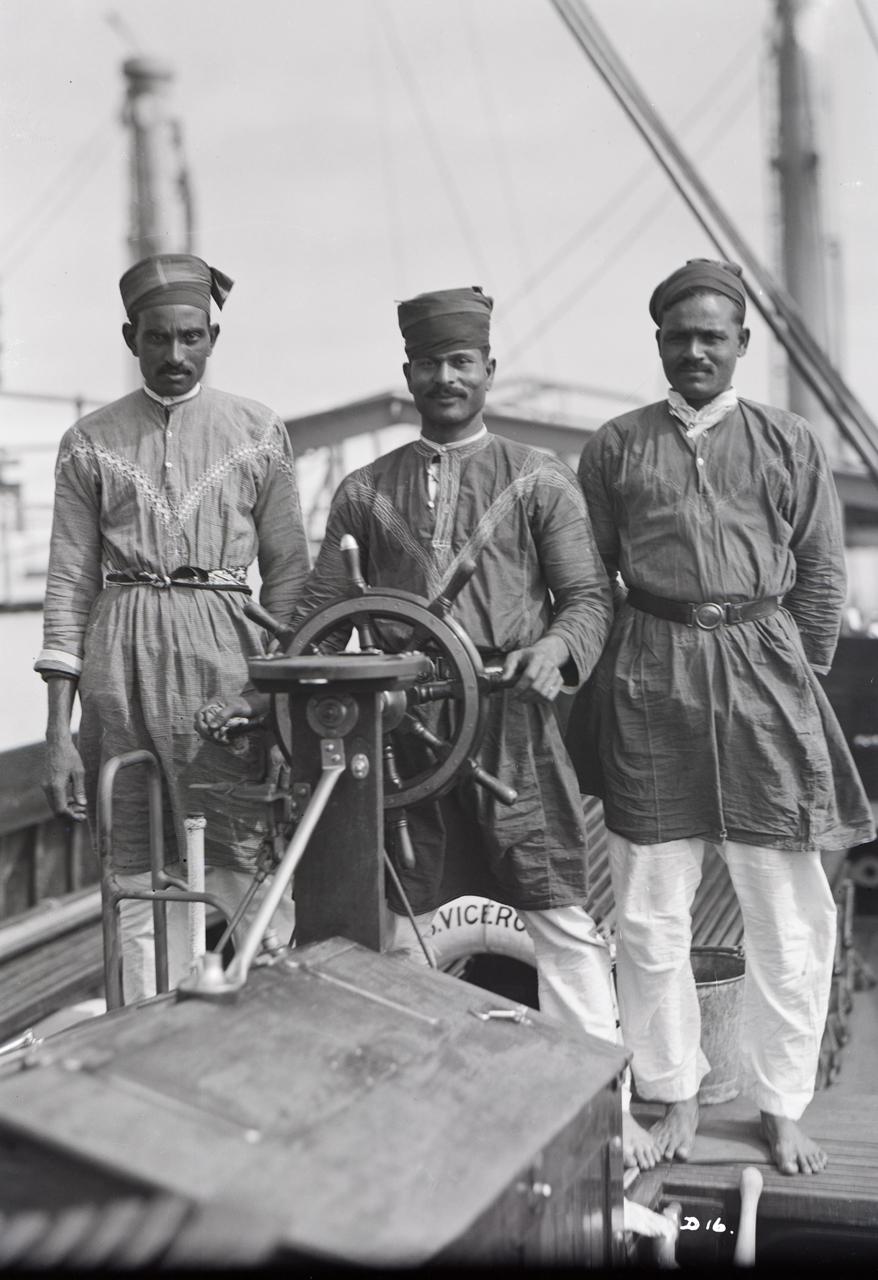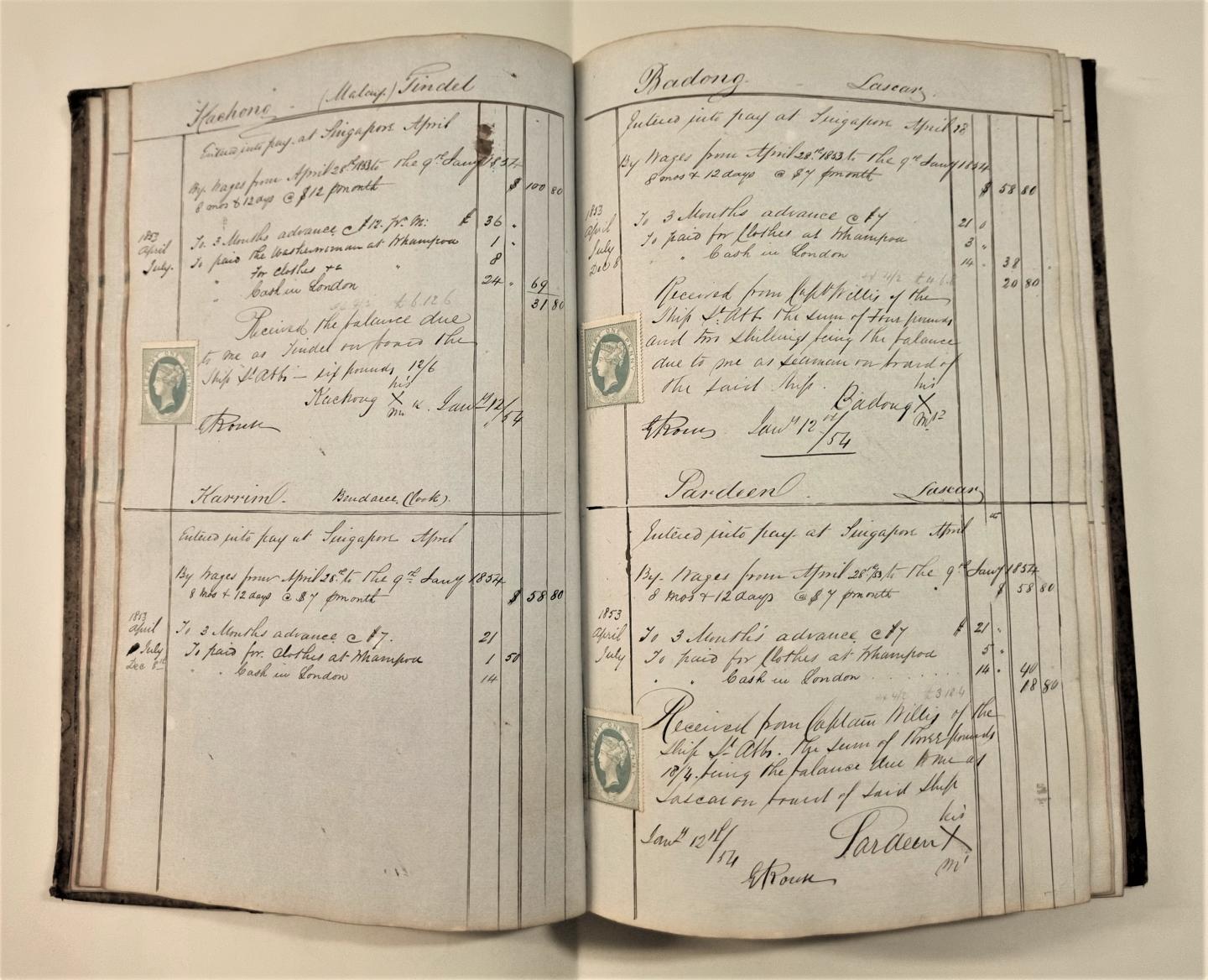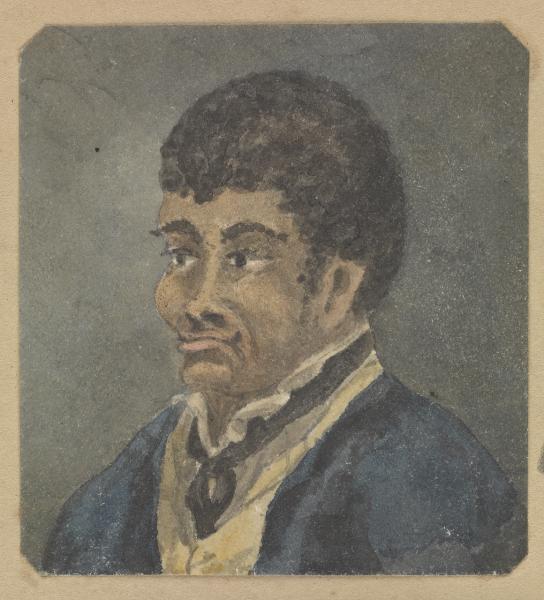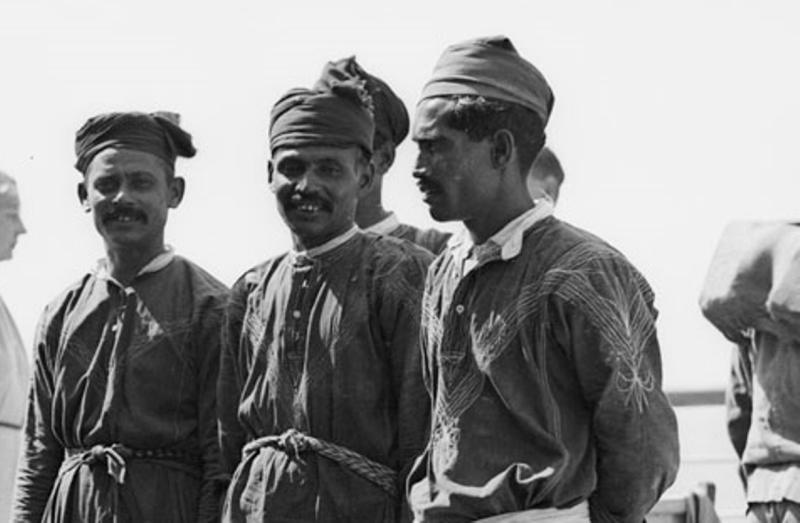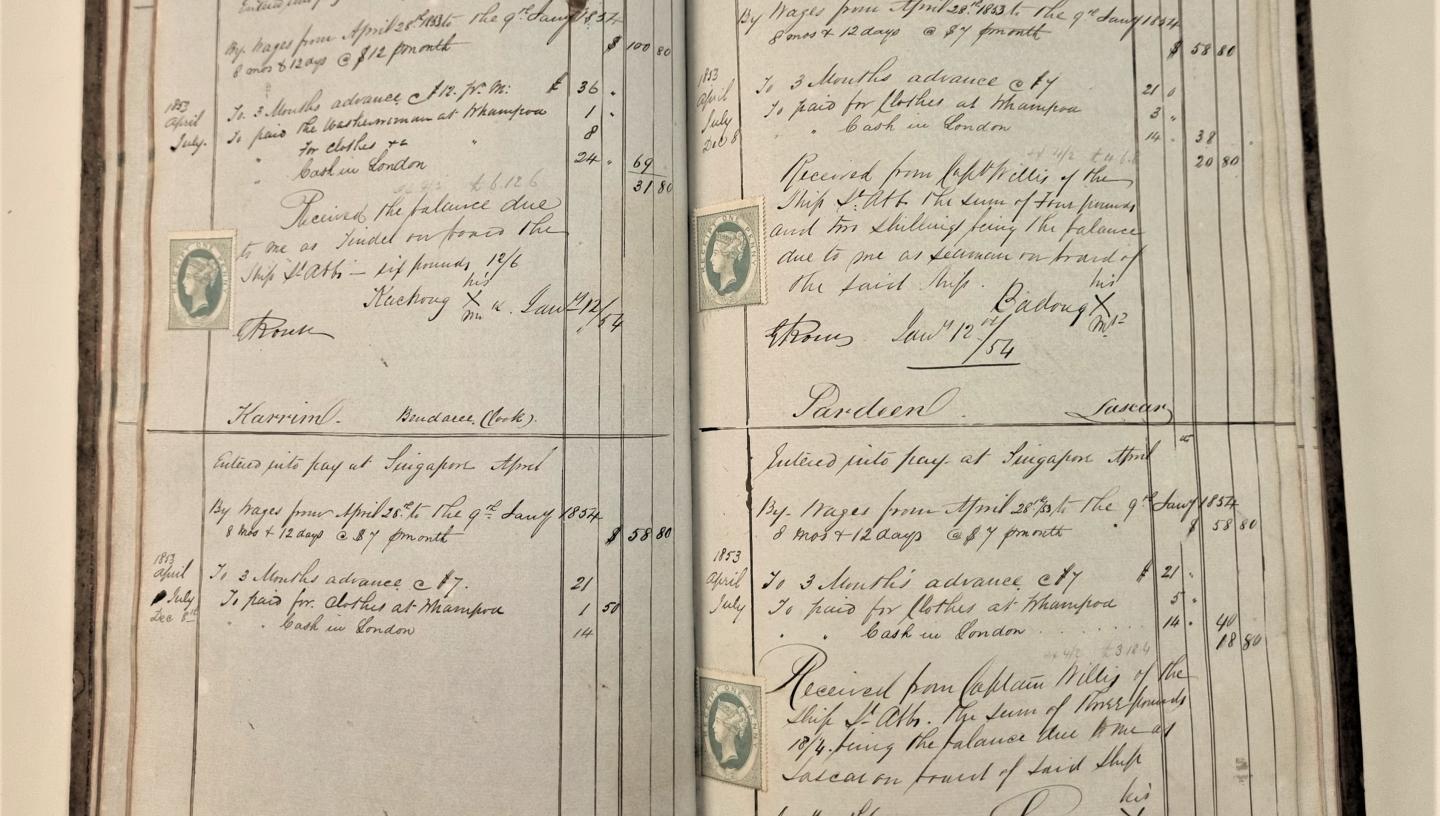
08 Aug 2022
For our latest Caird Library and Archive display case we highlight the lives of lascars serving on board British ships, as well as their often precarious situation in Britain.
by Magdalena Schedl, Library Assistant
Indian Ocean seafarers, more commonly known as lascars, have been employed to serve on board British ships since the establishment of safe sea routes from Europe to India in the sixteenth century.
The term ‘lascar’ originates from the Persian word for ‘army’ (لشک; lashka) and was first adapted by the Portuguese, who were also trading in the region at the time, to the word ‘lascarim’ to describe an Asian soldier or seamen.
The British later adopted the term and applied it broadly to any seamen recruited in the Indian Ocean region. The majority were from South Asia, but others came from Southeast Asia, East Africa and even the Philippines. Lascars were recruited from diverse port cities and countries and came from a wide range of ethnic, religious, cultural, and linguistic groups.
The British parliament soon passed stringent employment and settlement regulations to control the rising numbers of lascars, such as the Navigation Acts in 1651, which limited the recruitment of foreign sailors on board British ships.
Despite the British government’s efforts and laws passed to deny lascars full rights to employment, settlement and benefits while in Britain, growing international trade routes and merchant fleets, as well as new technological inventions such as the introduction of steam power and the related demand for cheap maritime labour in the following decades only fuelled their recruitment.
By the end of the First World War, an estimated one in five British merchant seamen was a lascar.
A growing number of lascars found their way to the British Isles on board European ships, although the Lascar Act of 1832 had stipulated that they were not allowed to be discharged west of the Cape of Good Hope, nor to be hired for outbound voyages to Asia. Struggling to recruit British sailors in Asia, many British merchant companies regularly flouted these laws on their return voyages to Europe but were often unwilling to risk high fines for re-hiring lascars once in Britain.
Many lascars were discharged in British port cities and ended up destitute in the streets; having to resort to begging, low-paid labour or poor houses, while also dealing with society’s openly negative attitudes towards them.
Eventually, the employment of lascars declined as Britain lost power and influence in the Indian Ocean region and the Lascar Act, the last legislation specifically regarding lascars, was repealed in 1963.
For over 200 years, lascars served, fought, and died on board European ships and contributed to making British merchant shipping globally dominant. Yet, they did so while often being ill-treated, under-paid, and faced with legal hurdles and other hardships.
On display are a selection of items in the Caird Library and Archive’s collection relating to lascars’ service on board British vessels as well as their lives on land.
The items on display are:
A logbook of St Abbs, a merchant vessel trading between London and East Asia which recruited lascars in the 1850s (RMG reference JOD/145);
a dictionary and phrasebook used by British merchant officers to communicate with their diverse crews (RMG reference: PBD7498);
annual reports of the Special Fund for Seamen, also called the Lascar Fund, introduced in 1911 (RMG reference: PBH0764);
and a book compiled by Joseph Salter on his missionary work at the Strangers’ Home for Asiatics, Africans and South Sea Islanders (RMG reference: PBH9920).
Lascars and British merchant shipping will be on display until November 2022.

